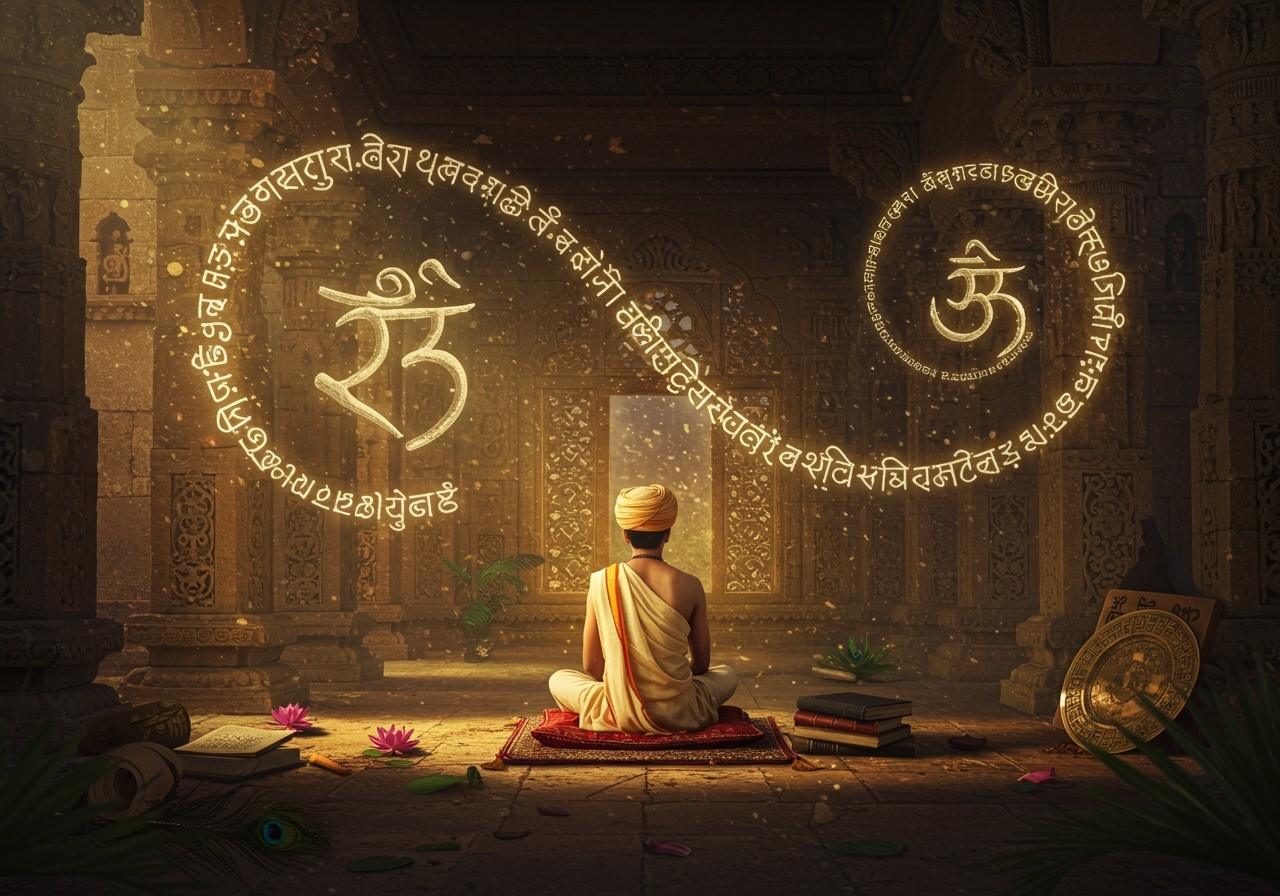
The Brahmi script and Sanskrit language are deeply intertwined in ancient Indian history. Their connection has fascinated scholars for centuries, prompting extensive research to understand their relationship. This article delves into the origins, evolution, and interconnections between Brahmi and Sanskrit, offering valuable insights for those who cherish tradition and authenticity, particularly culturally rooted, middle to upper-middle-class Indians.
Origins of Brahmi Script
The Beginnings: Brahmi, one of ancient India’s earliest writing systems, likely originated during the Maurya Empire around the 3rd century BCE. Theories about its origin vary, with some suggesting derivation from the Aramaic script and others proposing indigenous roots. Archaeological discoveries, such as the Ashokan inscriptions, offer concrete evidence of its use. Brahmi’s influence extended beyond India, reaching Southeast Asia and recording various languages, including Prakrit and early forms of Sanskrit.
Development and Evolution of Brahmi
Transformation Over Time: Over the centuries, Brahmi evolved into diverse regional scripts like Gupta, Nagari, and Devanagari. These variations played a crucial role in the script’s development, demonstrating its adaptability. Brahmi served as a vital tool for administrative and religious documentation. James Prinsep’s decipherment of Brahmi in the 19th century significantly advanced our understanding of ancient Indian history. Stylistic changes and adaptations occurred across different regions and periods, showcasing the script’s versatility.
Sanskrit Language: An Overview
A Rich Linguistic Heritage: Sanskrit’s roots lie in ancient India, with its early use evident in Vedic texts like the Vedas. Around 500 BCE, a transition from Vedic to Classical Sanskrit took place. Sanskrit became a cornerstone of literature, science, philosophy, and administration, exemplified by notable works such as the Mahabharata, Ramayana, and the poetry of Kalidasa. Sanskrit’s linguistic structure, with its unique phonetics, grammar, and syntax, has influenced numerous modern languages.
Brahmi Script and Sanskrit: A Complex Relationship
Intricate Interconnections: Brahmi became instrumental in inscribing Sanskrit texts, contributing to the standardization of inscriptions. Key inscriptions, like those of Ashoka, contain both Prakrit and Sanskrit, reflecting the languages of the time. Sanskrit’s importance in religious and scholarly contexts necessitated its documentation using Brahmi. The script adapted to accurately represent Sanskrit’s phonetic nuances. This symbiotic relationship significantly influenced the development of later scripts used for Sanskrit.
Is Brahmi Script Older than Sanskrit?
Exploring the Chronology: The question of whether Brahmi predates Sanskrit is a subject of ongoing debate. Evidence suggests that Sanskrit existed as a spoken language before Brahmi’s development. As per Georg Bühler’s late 19th-century proposition, Brahmi adapted from a Semitic script to accommodate the phonetics of Sanskrit and Prakrit. Persian influence during the Achaemenid empire’s control of the Indus Valley (around 6th-4th century BCE) further supports this theory. Brahmi is the ancestor of many scripts, including Devanagari, Bengali, and Tibetan.
Brahmi and Prakrit: A Linguistic Perspective
The Vernacular Connection: Prakrits served as the vernacular languages of ancient India, while Sanskrit fulfilled scholarly and religious functions. Inscriptions and texts reveal the coexistence of Prakrit and Sanskrit. Brahmi played a crucial role in documenting Prakrit languages, facilitating communication across various regions. Over time, a gradual shift from Prakrit to Sanskrit occurred in inscriptions.
Poojn.in: Your Resource for Cultural and Spiritual Products
For those seeking to deepen their understanding of Sanskrit, Vedic traditions, and ancient Indian culture, poojn.in offers a wide selection of relevant products. Explore our collection of:
- Sanskrit Mantras Guides and Resources: Delve into the spiritual power of Sanskrit mantras with our informative guides and resources.
- Traditional Prayer Beads (Mala): Enhance your meditation and spiritual practice with authentic malas, similar to those depicted with deities like Lord Brahma, representing knowledge and the Vedas.
- Sacred Ritual Items: Discover a range of items for various rituals and ceremonies, crafted with pure copper and brass, upholding traditional standards of purity and authenticity.
- Books on Hinduism and Vedic Traditions: Expand your knowledge of Hinduism, its origins, and its rich Vedic heritage with our curated book selection.
Poojn.in is committed to providing authentic and high-quality products that support your spiritual journey and exploration of ancient Indian culture. Visit us today to discover more!
Conclusion: Embracing Our Rich Heritage
Understanding the intricate relationship between Brahmi script and the Sanskrit language allows us to more deeply appreciate India’s rich and diverse cultural heritage. These ancient connections illuminate the significant influence they’ve had on our history, traditions, and linguistic development. For culturally rooted Indians who value tradition and authenticity, exploring this connection is a journey of self-discovery. As scholars continue to unravel these ancient links, we gain invaluable insights into our past, enriching our understanding of who we are today. Embrace this knowledge with pride and continue to celebrate the timeless wisdom of our ancestors.


